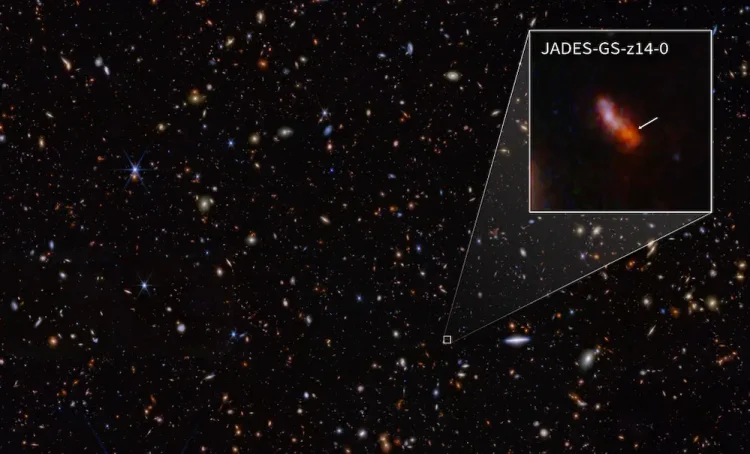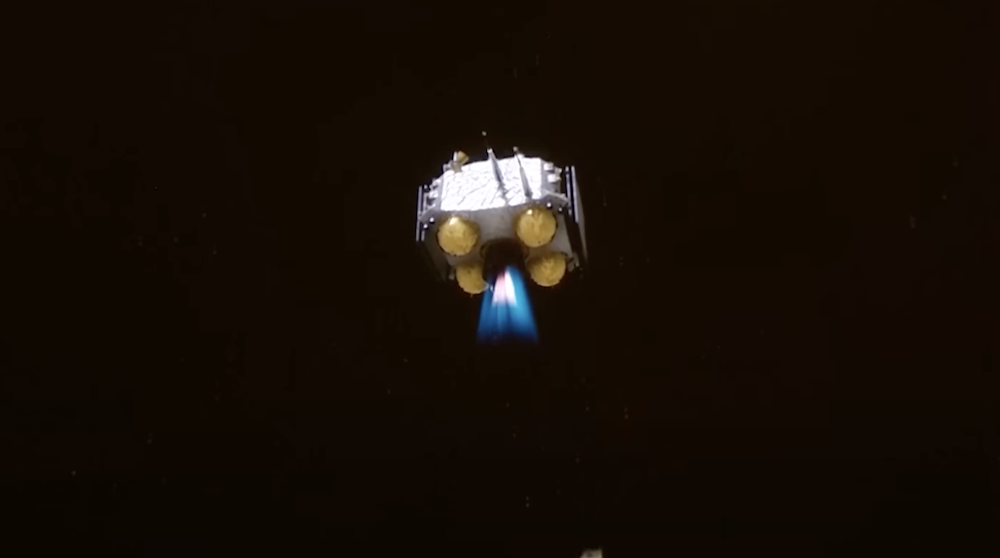The James Webb Telescope has successfully photographed the most distant known galaxy.
The galaxy, named JADES-GS-z14-0, was discovered as it existed just 290 million years after the Big Bang, in the dawn of the universe. The previous record-holder observed by this telescope was a galaxy seen at 325 million years after the Big Bang, which occurred nearly 14 billion years ago.
The newly observed and currently most distant galaxy is much brighter than expected, suggesting that the first generation of stars was either more luminous or formed much faster than cosmic theories predicted.
The ten-billion-dollar James Webb Space Telescope, launched in 2021, can see more of the cosmos than any previous telescope. Due to the expansion of the universe, light from distant galaxies stretches to longer wavelengths as it travels, an effect known as redshift. In these galaxies, the effect is extreme, stretching by a factor of 15 and shifting even the ultraviolet light of the galaxies to infrared wavelengths, where only the James Webb Space Telescope has the capability to see it.
Stefano Carniani of Scuola Normale Superiore in Pisa, the lead author of the discovery, said, “JADES-GS-z14-0 now becomes the archetype of this phenomenon. It is astonishing that the universe could create such a galaxy in just 300 million years,” writes the Guardian.
Researchers say the unexpected brightness of these early galaxies means the telescope might be able to make even more distant observations.









